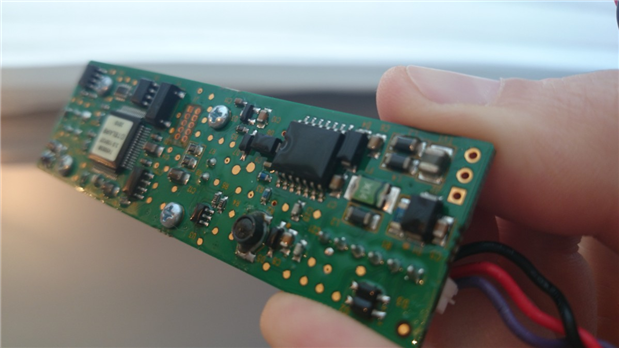So many sensors, so little time!
Have been studying sensor datasheets all this time to make up my mind on what sensors to use. Found it very hard come up with a meaningful, doable and useful selection. I was tempted to go for a full blown list of these popular, low-cost and popular air sensors: http://playground.arduino.cc/Main/MQGasSensors
You can find them on ebay for a few $ each, and it seems easy to get the readings: http://wiring.org.co/learning/basics/airqualitymq135.html
However I had some concerns about the quality of their measurements. Datasheets are not very detailed, and I have no easy way of calibrating / confirming these readings.
I think one needs a second (quality) sensor as a reference and go through something like this: http://davidegironi.blogspot.it/2014/01/cheap-co2-meter-using-mq135-sensor-with.html#.VJcTNCAIA
Since I want to have both internal and external sensors for comparing air quality, I decided on a middle-approach. Low cost sensor outside, quality sensor inside, which is also used for calibrating/verification purposes. I’ve spent quite some time on the farnell website, and found an interesting CO2 NDIR Infrared sensor at the reasonable price of £33:
GE MEASUREMENT & CONTROL / GE SENSING T8031 SENSOR, CO2, 2000PPM
(last item, it seems its a few years old)
In terms of characteristics it looks very promising and easy to use, for newbies like myself:
Patented absorption infrared/gas sensing engine provides high accuracy in a
compact, low-cost package
• Patented ABC Logic self-calibration system eliminates the need for manual calibration in most applications
• Gas permeable, water-resistant diffusion filter prevents particulate and water contamination of the sensor
• Lifetime calibration guarantee
Measurement Range 0-2000 ppm factory calibrated
Duct Air Velocity 0 to 1500 ft/min (0-450 meter/min)
Temp Dependence 0.2% of full scale per ºC
*Accuracy ±40 ppm +3% of reading @ 22ºC (72ºF) when compared with a factory certified reference
Non-linearity <1% of full scale @ 22ºC (72ºF)
Power Supply Requirements 18 to 30 VAC RMS, 50/60 Hz or 18 to 42 VDC, polarity protected. Power Consumption Typical values (1.65 watts peak, 0.65 watts avg. @ 42 VDC)
Output Analog 0 to 10 VDC (100 ohm output impedance)
I know the input voltage is not ideal for TTL/CMOS stuff but I will try to "boost" things. (Any advice is more than welcome)
Btw there are newer / improved sensors from the same family but kind of expensive for my budget as I went for the SMD rework station.
http://www.element14.com/community/docs/DOC-46395/l/telaire-6613-co2-modulepdf
http://www.element14.com/community/docs/DOC-46394/l/telaire-t6615-sensor-dual-channel-modulepdf
My first thought with the T8031 was, "I will reverse engineer their circuit, and modify it, to power it after the voltage regulation with something closer to 5volts".
Great idea :-) if only everything was not covered in black varnish :-P
I should have guess that, by looking at the number of repetitions of the word "patent" in the datasheet :-)
Anyway, lets continue with the CO2 sensing by the book. I also found someone who has the T8031 running in parallel with MG-135 and looks ugly (probably for the MG-135), https://xively.com/feeds/1400982654
I don't know if it’s in the same location, I will do my own tests, and in the worst case I will just keep the telaire sensor only.
I will also add Internal/external temperature and humidity but the TI SMD are soooo small. so will start with some cheapy DHT11 & LM35 for breadboard prototyping and will go back to the SMD once I have my PCB.
Furthermore I will use the dust sensor for outdoor for outdoor measurements:
GP2Y1010AU0F - SHARP - DUST SENSOR | Farnell element14 UK
Found a nice example here: Monitoring your Air Quality
For external use, I do not like the idea of flooding the sensor when it rains, so I also got a basic rain/drop sensor (grill and LM358) in order to shut down the ventilation that will push air in the dust sensor when raining. I need to carefully think about the case. (if only I was roadtesting a 3D printer :-P )
I will also try to do a wind-meter based on a old brushless pc-fan, taking advantage the ball-bearings and the 3-wire speed sensor setup.
Hope to gain some ground during the holidays, as I did not have much free time to work on this project during the last two weeks.



Top Comments
-

DAB
-
Cancel
-
Vote Up
0
Vote Down
-
-
Sign in to reply
-
More
-
Cancel
Comment-

DAB
-
Cancel
-
Vote Up
0
Vote Down
-
-
Sign in to reply
-
More
-
Cancel
Children